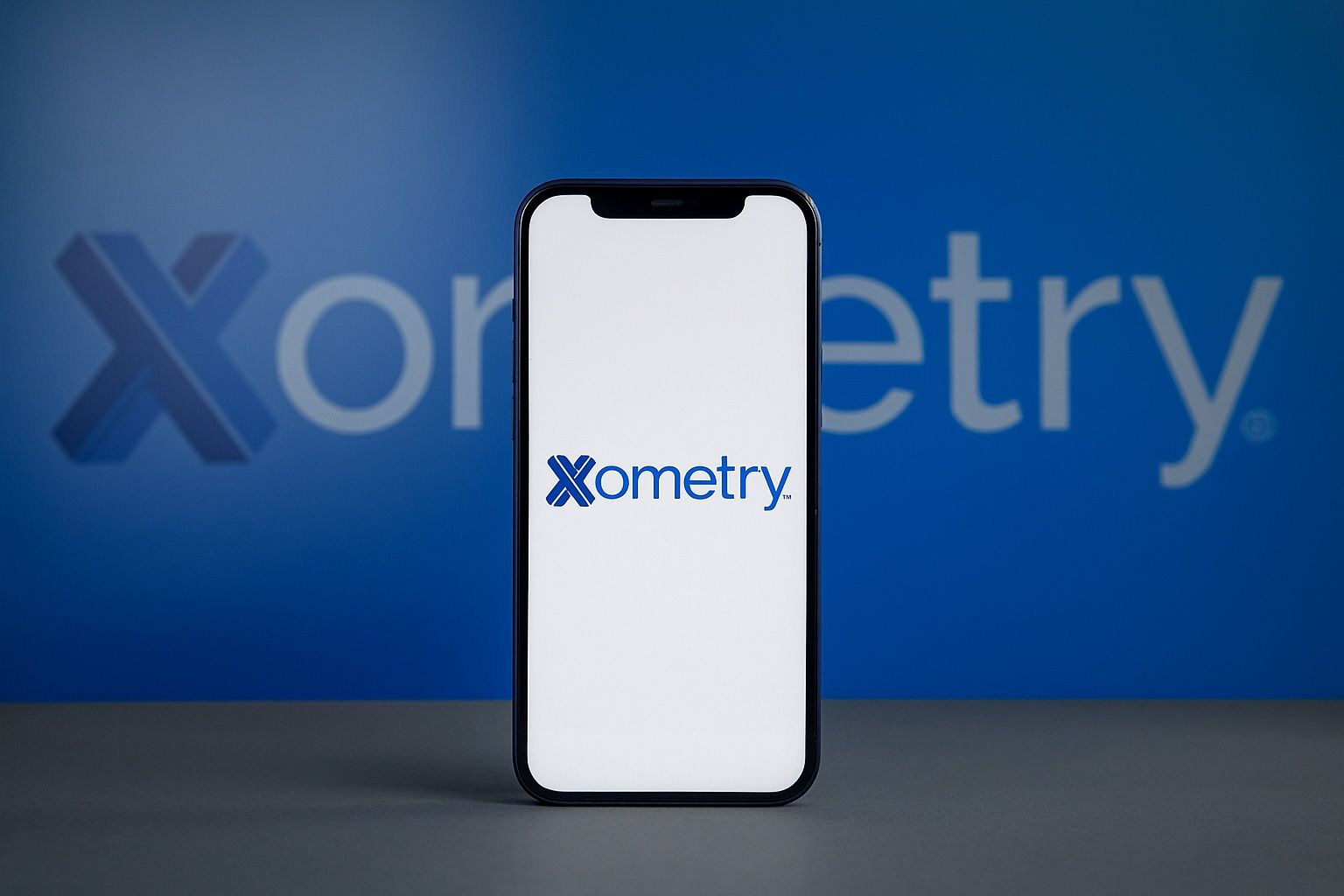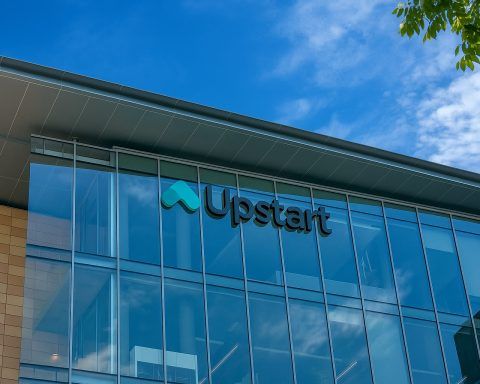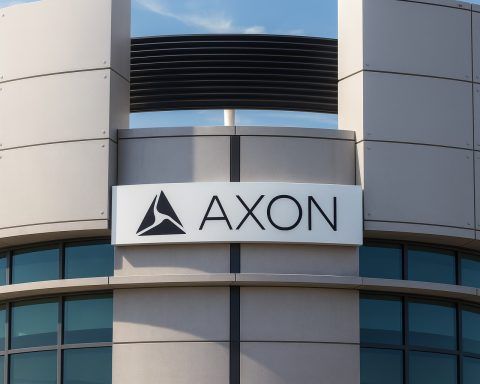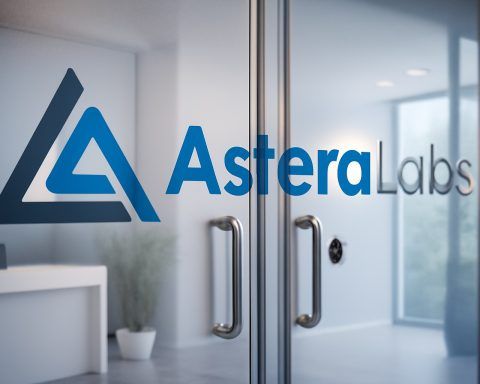Key Facts (as of Nov 4, 2025)
- Stock Price Surge: Xometry’s stock jumped +24% on Nov 4, 2025, hitting around $60/share, after a strong earnings report – near a new 52-week high [1]. Prior day’s close was ~$48.6 [2].
- Recent Price Range: Before the earnings spike, XMTR traded in the upper-$40s. It closed at $48.57 on Nov 3 and $48.69 on Oct 31 [3]. The 52-week range is $18.59 – $60.73, reflecting a tripling of the stock over the past year [4].
- Q3 2025 Blowout Results:Revenue $180.7M (+28% YoY) vs ~$168M expected; Adj. EPS $0.11 vs $0.10 estimate [5]. Marketplace revenue grew 31% YoY to $167M [6]. Gross profit up 29% (35.7% gross margin, +210 bps) [7]. Adj. EBITDA turned positive $6.1M (improved $6.8M YoY) [8].
- Growth Metrics:Active buyers: 78,282 (+21% YoY); large customers (> $50k spend): 1,724 (+14% YoY) [9] – indicating deeper enterprise adoption.
- Guidance Raised: Xometry raised Q4 2025 revenue guidance to $182–184M (23–24% YoY growth) and FY 2025 to $676–678M, topping prior consensus (~$658M) [10]. Management expects strong momentum into next quarter and improved profitability.
- Analyst Sentiment: Wall Street is bullish-leaning on XMTR. ~5–6 analysts rate it Buy (rest Hold) and no major firm recommends Sell [11]. The median 12-mo price target was ~$48–50 (pre-earnings) [12], which the stock has now exceeded – suggesting upcoming target upgrades.
- Industry Context: Xometry’s AI-driven marketplace is outpacing traditional peers. Competitor Proto Labs (PRLB) saw its stock plunge ~9% on weaker results [13], underlining Xometry’s differentiated model and sector-leading growth.
Stock Price & Recent Performance
Xometry’s stock (NASDAQ: XMTR) has been on a tear in early November 2025. On Nov 4, 2025, shares skyrocketed ~24% intraday following the Q3 earnings announcement, peaking around $60 and nearing a 52-week high of $60.68 [14]. It closed the day at roughly $60.23 (up from $48.57 the prior session) [15]. This record high represents a dramatic one-day gain and continues a strong upward trend – the stock has more than tripled from its 52-week low of ~$18.59 earlier in the year [16].
In the days leading up to Nov 4, XMTR traded relatively flat in the high-$40s. For example, it closed at $48.57 on Nov 3 (virtually unchanged from $48.69 on Oct 31 [17]). The week prior saw mild volatility – shares dipped ~4% on Oct 30 to ~$48.52 [18] after hovering around $50 – but there were no major moves until the earnings-fueled breakout. In fact, Xometry had already climbed steadily through 2025 (up ~171% year-over-year according to one analyst) [19], reflecting growing investor optimism. The explosive Nov 4 rally pushed XMTR to new heights on huge volume, signaling a surge of bullish sentiment and putting the stock well above its recent moving averages. Traders noted the stock trading ~23–24% above its previous close in a single day, an exceptional jump for a mid-cap tech stock [20].
Financial Performance & Recent Earnings
Xometry delivered record financial results in Q3 2025, underscoring accelerating growth and an improving path to profitability. The company’s earnings report (released November 4) beat analyst expectations on both revenue and earnings, while key profitability metrics hit new highs [21]. Highlights from the third quarter 2025 include:
- Revenue: $180.7 million (up +28% YoY), a quarterly record, significantly above the ~$168.3M consensus estimate [22]. This robust growth far outpaced the ~18–19% increase that management had forecast earlier, indicating Xometry’s marketplace demand is surging.
- Adjusted EPS: $0.11 (vs. $0.10 expected) [23] – marking a swing to profit on an adjusted basis. This compares to roughly break-even a year ago, highlighting substantial earnings leverage.
- Marketplace Revenue: $167M (up +31% YoY), reflecting core platform sales to customers [24]. This segment’s growth underscores strong enterprise adoption of Xometry’s AI-powered manufacturing marketplace.
- Gross Profit & Margins: $72 million gross profit (+29% YoY) with marketplace gross margin of 35.7%, expanding +210 bps year-over-year [25]. Higher margin indicates improved efficiency and pricing power, likely driven by AI-driven cost optimization and scale.
- Adjusted EBITDA:+$6.1 million, a positive EBITDA for the quarter (improving by $6.8M from a -$0.7M loss in Q3 2024) [26]. Turning EBITDA-positive is a key milestone, showing Xometry’s business model can generate operating profit as volume grows.
- Active Buyers: 78,282 active marketplace buyers, up 21% from 64,851 a year prior [27]. The user base expansion, especially among large clients, fueled the revenue jump. Notably, accounts spending >$50k in the last 12 months grew to 1,724 (+14% YoY) [28] – indicating deeper penetration into big enterprise customers with repeat large orders.
Management emphasized that big enterprises are increasingly driving Xometry’s growth. “This was another record quarter for Xometry as enterprise customers rapidly adopt our supply chain solutions… underscoring the strength of our platform and strategic global network,” said CEO Randy Altschuler [29]. In other words, larger firms are using Xometry for their manufacturing procurement needs at an accelerating rate. The result is not only higher revenue, but also improving margins due to efficiencies of scale and technology. Gross margin hit a record high, and the company’s adjusted EBITDA turning positive signifies Xometry’s business model is scaling toward profitability.
It’s also worth noting that Xometry’s balance sheet and cash flow are solid (the company had over $300M cash and modest debt earlier in the year, though updated figures weren’t highlighted in this report). With Q3’s results, Xometry has demonstrated that its AI-driven marketplace can grow rapidly while moving toward sustainable profits – a combination that encouraged investors and drove the stock’s sharp rally.
Recent News & Developments
Beyond the headline earnings, Xometry has had several recent developments and news items leading up to and including early November 2025:
- Record Q3 Earnings & Guidance (Nov 4, 2025): Xometry’s third-quarter results not only beat expectations but also came with upward guidance revisions. The company raised its Q4 2025 revenue outlook to $182–184M (above the ~$176M street estimate) and hiked full-year 2025 revenue guidance to $676–678M [30]. This bullish outlook, delivered in the Nov 4 earnings release, signaled management’s confidence in strong demand continuing through year-end. The news of record revenue (+28% YoY) and a guidance boost was the primary catalyst for the stock’s one-day jump of over 20% [31] [32]. Executives highlighted momentum with large customers and improved margins, and the market clearly took notice.
- Product & Platform Enhancements (Oct 2025): Xometry has been investing in its platform capabilities. In early October, the company launched a new “Workcenter” mobile app for its manufacturing partners [33]. This app empowers Xometry’s network of machine shops and suppliers to accept jobs, manage workflow, and track performance on-the-go via smartphone. It sends real-time push notifications and even allows photo uploads and digital signatures, making it easier for suppliers to participate in Xometry’s marketplace from the shop floor. This enhancement improves supplier responsiveness and could attract more supplier partners – critical for fulfilling growing order volumes. Additionally, on Oct 23, 2025, Xometry introduced an auto-quote capability for injection molding services [34]. This AI-driven feature instantly provides price quotes for custom injection-molded parts, expanding Xometry’s instant quoting system beyond 3D printing and machining. By streamlining the quoting process for injection molding (a common manufacturing need), Xometry further solidified its technological edge and appeal to buyers. These product developments generated positive buzz in industry circles and demonstrate Xometry’s commitment to continuous innovation in digital manufacturing.
- Industry Recognition & Partnerships: Xometry’s role in modernizing manufacturing procurement has been highlighted in the media. For instance, Procurement Magazine in October ran a feature on “How Xometry is Powering the Buyer-Supplier Relationship,” and even The Wall Street Journal discussed the rise of on-demand manufacturing networks (with Xometry as a key player) in an October piece on the future of supply chains. Such coverage raises Xometry’s profile among potential customers and investors. While no major new partnerships were announced in the last few weeks, Xometry’s existing partnerships (e.g. with large industrial firms and integrations into popular CAD software) continue to drive user growth. The company also announced it would present at several investor conferences in November, aiming to keep investors informed and attract more interest following its strong quarter [35].
Overall, the recent news flow around Xometry has been overwhelmingly positive – a standout earnings beat, improved guidance, and continuous platform upgrades. This convergence of good news set the stage for the stock’s sharp rise. The only tempered note in recent days came not from Xometry but from the broader market: some tech and industrial stocks saw volatility in late October, and there remain macroeconomic concerns (interest rates, manufacturing PMI softness) that could impact demand. However, Xometry’s specific news and execution have so far outshined those headwinds.
Analyst Commentary & Ratings
Wall Street analysts have turned increasingly upbeat on Xometry in light of its strong execution. According to a Finimize report, “Analysts now lean bullish, with no one recommending a sell” on XMTR shares [36]. Prior to the latest earnings, the consensus 12-month price target hovered in the high-$40s (~$48–50) [37], roughly in line with the stock’s price before the Nov 4 spike. In other words, Xometry was considered fairly valued by analysts at ~$48. Now, with the stock ripping to ~$60, we can expect those targets to be revised upward as analysts digest the new guidance and growth trajectory.
Coverage and ratings: About 10–11 analysts actively cover Xometry. Roughly half rate it a “Buy” or Outperform, and the rest rate it “Hold” – with effectively no outright Sell ratings among major firms [38]. (One independent research service had issued a sell-equivalent rating earlier in October [39], but this is an outlier; mainstream sell-side analysts are either bullish or neutral on XMTR.) This bullish tilt has strengthened after Q3’s results. For example, Citizens JMP Securities reiterated its Market Outperform rating and $50 price target in late October, noting Xometry’s “remarkable momentum” – a +171% stock return over the past year – and maintaining a positive growth outlook [40]. Another firm, Goldman Sachs, had raised its target from $42 to $49 (Neutral rating) in mid-October ahead of earnings [41], citing improved prospects as Xometry’s results consistently outperformed estimates. We are likely to see further target upgrades: for instance, analysts at Needham or Loop Capital might lift their targets into the $60s given the new guidance (though official revisions are pending as of Nov 4).
Analysts also point out that Xometry’s valuation has risen with its stock price. The stock’s price-to-earnings (P/E) ratio (on a forward basis) has jumped from ~62 to 72 in the last quarter [42] thanks to the rally – a sign of high growth expectations being priced in. This has “stoked some valuation debates,” as Finimize notes [43]. However, the prevailing sentiment is that Xometry’s growth story justifies a premium multiple. No analyst has downgraded the stock in response to the price jump; instead, the focus is on Xometry’s execution. “Revenue, gross margin, and EBITDA all exceeded expectations… raised guidance and a strong start to the new quarter indicate continued momentum,” wrote one bullish analyst after the prior quarter [44] [45]. The consensus view is that Xometry is tapping into a large addressable market with secular tailwinds (more on that below), so many analysts remain optimistic despite the higher share price.
In summary, expert commentary portrays Xometry as a high-growth tech/industrial play that is delivering on lofty promises. The stock is generally rated a “Moderate Buy” – with some caution around valuation – but analysts have been quick to applaud its recent performance. As one report succinctly put it, Xometry is “firing on all cylinders” after this earnings beat, and Wall Street appears inclined to give management the benefit of the doubt heading into 2024.
Short-Term Outlook (Next Quarter)
In the near term (Q4 2025 and early 2026), Xometry’s outlook is positive and now officially above prior consensus expectations. The company itself projects Q4 2025 revenue of $182–184 million, which would mark about 23–24% year-over-year growth [46]. Hitting the midpoint of that range (~$183M) would also represent sequential growth from Q3’s $180.7M – indicating that Xometry sees demand continuing to ramp up through year-end, despite Q4 usually being a seasonally steady quarter. This is a bullish sign that the momentum from Q3 is carrying forward. Notably, the new Q4 guidance handily exceeds the $176M that analysts had expected prior to earnings [47], so even the cautious forecasts are being revised upward.
On the earnings side, Xometry did not explicitly guide Q4 EPS, but given the improved margins and positive Q3 EBITDA, many expect Q4 to also be profitable on an adjusted basis. The CFO hinted at ongoing efficiency gains, saying the firm will drive “20% annual incremental Adjusted EBITDA margins as we scale” [48]. In practical terms, this means a good portion of each new dollar of revenue should fall to the bottom line. If Xometry hits its Q4 revenue target, we could see another quarter of solid adjusted profits and margin expansion.
In the next few weeks, a couple of factors will likely shape the stock’s short-term performance:
- Earnings Follow-through: Investors will watch if Xometry can deliver Q4 results in line with this raised guidance. Any signs that the Q3 boost was not a one-off (e.g. continued 20%+ growth in early Q4 orders) will reinforce confidence. The company’s commentary about a “strong start” to Q4 implies that October demand was robust [49].
- Seasonal & Macro Factors: Late Q4 can be seasonally slower for manufacturing, and broader macroeconomic headwinds (higher interest rates, slowing industrial activity) could be a factor. Some analysts have cautioned that macroeconomic uncertainties and a potential H2 2025 growth moderation remain risks [50]. If manufacturing sector data in Nov/Dec comes in weak, it might temper enthusiasm for industrial tech stocks like Xometry. However, so far Xometry’s niche – on-demand, digital manufacturing – is outperforming the broader industrial market (as evidenced by its growth while some peers struggle).
- Stock Volatility: After such a big one-day jump, it’s possible the stock could pull back or consolidate in the short term. Traders may “sell the news” or take profits. The stock’s technical indicators show it in overbought territory short-term (it blasted above its Bollinger Band and has a high intraday RSI around Nov 4) [51]. Minor volatility aside, if Xometry holds most of its gains, that will be a strong signal of investor confidence heading into 2026.
Overall, the short-term forecast for Xometry is upbeat. The company’s own targets point to ~23% growth with improving margins next quarter, and there is tangible evidence of demand strength (enterprise buyer growth, raised guidance). Barring an unforeseen slowdown, Xometry appears on track to finish 2025 with roughly $677M revenue (23-24% annual growth) and a clear trend toward profitability – a combination that could continue to support its stock price. Investors should keep an eye on the Q4 earnings report (likely due in February 2026) and any updates on order activity or new customer wins in the interim.
Long-Term Outlook
Looking further ahead, Xometry’s long-term prospects remain highly promising, supported by secular trends and the company’s strategic position in its industry. The digital transformation of manufacturing procurement is a multi-year trend that Xometry is capitalizing on. As Finimize noted, “Xometry’s strong performance isn’t just a one-off — it’s part of a bigger move by businesses to digitize and modernize manufacturing.” [52]. Traditional methods of sourcing custom parts (emails, phone calls, local suppliers) are increasingly giving way to online marketplaces and AI-driven instant quoting. Xometry, with its first-mover advantage and global network of thousands of suppliers, is well positioned to ride this wave. In the coming years, more companies are expected to adopt distributed manufacturing and on-demand production to make supply chains more resilient – a trend accelerated by recent global supply chain disruptions. Xometry’s platform essentially enables that shift by connecting big buyers with a distributed network of manufacturers. This gives Xometry a significant runway for growth as it penetrates more industries and geographies.
Analyst projections reflect this optimism. According to SimplyWall.St, Xometry’s revenue is forecast to grow ~15% annually in the medium term, and earnings (EPS) are expected to grow about 80% per year [53]. Such rapid EPS growth suggests analysts see Xometry scaling to consistent profitability and improving margins (since revenue growth is a solid mid-teens, but EPS growth much higher implies widening profit margins). In fact, by some estimates Xometry could approach breakeven GAAP net income in 2025 and turn decisively profitable in 2026, given the current trajectory of improving EBITDA and the operating leverage in its model. Management’s long-term goal is to keep scaling the marketplace rapidly. The CFO, James Miln, stated, “We expect to deliver 20% annual incremental Adjusted EBITDA margins as we scale to $1 billion in revenue.” [54]. For context, hitting $1B revenue would likely take Xometry until around 2027 if it grows ~20% year-over-year (starting from ~$677M in 2025). At that scale, a 20% incremental EBITDA margin implies substantial profitability – roughly $200M of EBITDA on that $1B revenue if achieved. While it’s not a guarantee, it provides a roadmap: Xometry plans to continue growing ~20-30% annually in coming years and aims to convert a larger share of those revenues into profit through efficiency and AI-driven automation.
On the innovation front, Xometry’s AI and platform technology will be key long-term drivers. The company continues to refine its machine-learning algorithms for instant quoting and matching jobs to the optimal supplier. It’s also integrating more services (like the injection molding quotes, the mobile app, and the Thomasnet supplier directory it acquired) to build a one-stop ecosystem for manufacturing needs. This creates a network effect moat – as more buyers and suppliers join, the platform becomes more valuable, which attracts even more participants. By deepening these network effects, Xometry could maintain a lead over potential new entrants. Additionally, Xometry’s expansion into international markets (it already has a growing presence in Europe and Asia) opens up an even larger addressable market in the long run. Global manufacturers face similar challenges that Xometry’s platform addresses, so international growth can complement domestic expansion.
Of course, long-term risks exist. Manufacturing is cyclical; a major global downturn could slow Xometry’s growth if customers cut back on orders. There’s also competition (discussed below) – if large industrial players or tech giants develop competing networks or if existing competitors aggressively target Xometry’s clients, growth could be affected. Moreover, sustaining 20%+ growth as the revenue base gets larger will be challenging; growth rates may gradually taper into the teens (analysts already forecasting ~15% annually) [55]. However, even with more moderate growth, Xometry’s margin expansion means earnings could compound very rapidly, which is ultimately what drives long-term stock appreciation.
In summary, Xometry’s long-term outlook is bright: the company is a leader in a burgeoning field (AI-enabled manufacturing marketplace) and is executing well. If it continues to add high-value customers and expand its network, Xometry could realistically reach the $1B revenue milestone later this decade, with substantially higher profits. Analysts see significant upside in earnings power, and the strategic tailwinds (digitization, AI, supply chain re-shoring) all favor Xometry’s business model. Long-term investors will be watching how Xometry balances growth and profitability – so far, the trajectory is very encouraging.
Competitive Landscape & Industry Context
Xometry operates in the on-demand manufacturing and industrial procurement space, which is still an emerging niche within the broader $100+ billion custom manufacturing industry. Its primary competition comes from two areas: traditional manufacturing firms (and job shops) that companies have historically used, and other digital platforms attempting similar marketplace models.
Among direct competitors, the most notable is Proto Labs (NYSE: PRLB). Proto Labs is an established digital manufacturing company that provides quick-turn prototyping and short-run production (CNC machining, 3D printing, injection molding, etc.), but using its own in-house facilities rather than a third-party network. In effect, Proto Labs has a more capital-intensive model. Recently, Proto Labs has faced headwinds – in stark contrast to Xometry’s success. In its latest earnings, Proto Labs reported softer growth and margin compression, which spooked investors. Proto Labs’ stock plunged 9.3% after its report, reflecting concerns over rising costs and competitive pressure [56]. Some of those competitive pressures likely stem from marketplace players like Xometry siphoning away customers with a broader array of suppliers and potentially better pricing. Xometry’s Q3 showcased a 35.7% gross margin (up 210 bps) [57], indicating efficiency gains from its AI-driven model that contrast with Proto Labs’ struggles in more commoditized services. This divergence highlights Xometry’s advantage: by being an asset-light marketplace, Xometry can scale without heavy capital expenditure, and its AI optimizes job allocation to keep margins healthy.
Other competitors include smaller startups and regional manufacturing networks (for example, Fathom Digital Manufacturing is a smaller public company in on-demand manufacturing, and there are private startups like 3D Hubs which was acquired by Proto Labs). However, none have the scale or breadth of Xometry’s marketplace. Traditional CNC machining shops and contract manufacturers could also be seen as competitors in the sense that a buyer could always go directly to a known supplier. But Xometry’s value proposition is that it can aggregate thousands of suppliers, providing capacity and capabilities that no single shop can match, and deliver instant price quotes and guaranteed quality. This is something unique that traditional players find hard to replicate.
In the broader industry context, the manufacturing sector in 2025 is grappling with the need for greater agility and digital integration. Companies want to avoid supply chain disruptions and reduce lead times. Xometry sits at the intersection of that need, offering a digital solution to source parts quickly from a distributed network. The trend of supply chain localization and diversification (partly a response to global trade uncertainties) also benefits Xometry – firms are looking for domestic and near-shore suppliers for resilience [58] [59], and Xometry’s platform conveniently lists suppliers across the U.S. and internationally. Essentially, Xometry is turning the fragmented world of custom manufacturing into a cohesive online marketplace, much like how Airbnb did for lodging or Uber for transportation. In doing so, it is capturing market share from the old ways of sourcing.
One could argue that large tech companies or manufacturing OEMs might eventually try to build their own networks or platforms. But Xometry’s head start and data advantages (its quoting algorithms improve with each job) give it a competitive moat. Additionally, Xometry has partnerships with software like Autodesk Fusion 360 and SOLIDWORKS that embed its quoting into design workflows, making it the go-to option for engineers at the design stage. This kind of ecosystem integration further solidifies its position.
In conclusion, Xometry leads a growing market segment with few direct peers matching its scale. Its nearest competitor, Proto Labs, is handling growth challenges, whereas Xometry is thriving – a recent commentary noted Xometry’s “unique positioning in the industrial AI revolution” [60]. The competitive landscape will undoubtedly evolve as the industry transforms, but at this moment, Xometry appears to be the pace-setter in the race to digitize manufacturing sourcing. Its ability to execute will determine if it maintains that lead, but based on current performance, Xometry is well positioned to continue outpacing the competition.
Conclusion
Xometry, Inc. (XMTR) has emerged in late 2025 as a standout performer in the tech-enabled industrial space. The stock’s meteoric rise – capped by a 24% surge on record Q3 earnings – reflects real fundamental progress: surging revenue, expanding margins, and growing adoption by big-ticket customers. Recent news has been decidedly positive, from raised guidance to new AI-driven product features, all reinforcing the narrative that Xometry is revolutionizing manufacturing procurement.
Market analysts, while mindful of the stock’s valuation, generally agree that Xometry’s growth story remains compelling. “Xometry’s record-breaking rally has ignited a firestorm in the sector,” one market observer noted [61], and importantly, the company’s results back up the hype. In the short term, investors can look for continued strong growth into Q4 and watch for any macro speed bumps. Over the longer term, Xometry’s success will hinge on executing its vision of a global on-demand manufacturing marketplace – a vision that appears increasingly attainable as more industries embrace digital supply chains.
For investors, Xometry presents a mix of high-reward potential and the volatility that comes with it. The stock is at all-time highs and priced for growth, but if the company sustains its momentum, today’s valuations could be justified (or even modest) in hindsight. Conversely, any stumble or broader market downturn could introduce turbulence. As of now, though, Xometry is riding a powerful wave of innovation and demand, and many experts believe this company is helping to “shape the future of how manufacturers and companies around the world connect and work together” [62]. The recent developments suggest that Xometry’s journey is just beginning – and Wall Street will be closely watching what comes next for this AI-powered manufacturing disruptor.
Sources: Recent financial releases and analysis covering Xometry’s Q3 2025 results [63] [64]; real-time stock price data from Nov 4, 2025 [65]; market commentary from AInvest and Finimize [66] [67]; and analyst insights from SimplyWall.St and others [68] [69], as cited above.
References
1. www.ainvest.com, 2. www.investing.com, 3. www.investing.com, 4. www.investing.com, 5. www.investing.com, 6. www.investing.com, 7. www.investing.com, 8. www.investing.com, 9. www.investing.com, 10. www.investing.com, 11. finimize.com, 12. finimize.com, 13. www.ainvest.com, 14. www.ainvest.com, 15. www.investing.com, 16. www.investing.com, 17. www.investing.com, 18. www.investing.com, 19. www.investing.com, 20. www.ainvest.com, 21. www.investing.com, 22. www.investing.com, 23. www.investing.com, 24. www.investing.com, 25. www.investing.com, 26. www.investing.com, 27. www.investing.com, 28. www.investing.com, 29. www.investing.com, 30. www.investing.com, 31. www.investing.com, 32. www.ainvest.com, 33. simplywall.st, 34. investors.xometry.com, 35. investors.xometry.com, 36. finimize.com, 37. finimize.com, 38. finimize.com, 39. www.marketbeat.com, 40. www.investing.com, 41. www.marketbeat.com, 42. finimize.com, 43. finimize.com, 44. simplywall.st, 45. simplywall.st, 46. www.investing.com, 47. www.investing.com, 48. www.investing.com, 49. simplywall.st, 50. simplywall.st, 51. www.ainvest.com, 52. finimize.com, 53. simplywall.st, 54. www.investing.com, 55. simplywall.st, 56. www.ainvest.com, 57. www.ainvest.com, 58. simplywall.st, 59. simplywall.st, 60. www.ainvest.com, 61. www.ainvest.com, 62. finimize.com, 63. www.investing.com, 64. www.investing.com, 65. www.investing.com, 66. www.ainvest.com, 67. finimize.com, 68. simplywall.st, 69. www.investing.com












